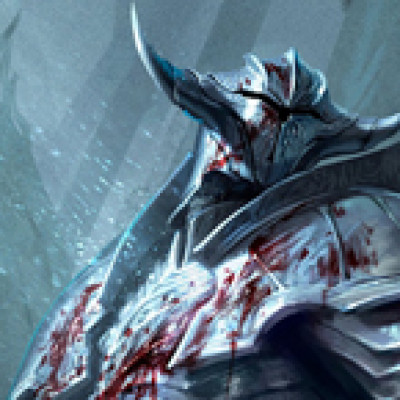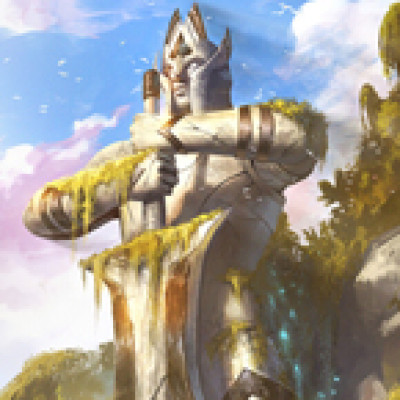Welcome to Everfest! I am living vicariously through the masses I’ve been watching open packs on stream and Twitter, anxiously awaiting my product so I can start ripping into some packs. Texas froze over on Wednesday night, and we’re still dealing with the aftermath- including a complete shutdown and massive delays for our USPS system. Deliveries are backed up, and that means more wait time until my cards arrive. Regardless, I still want to share some content for release day, for all you lucky readers who will be opening new Everfest cards and jamming them into your decks.
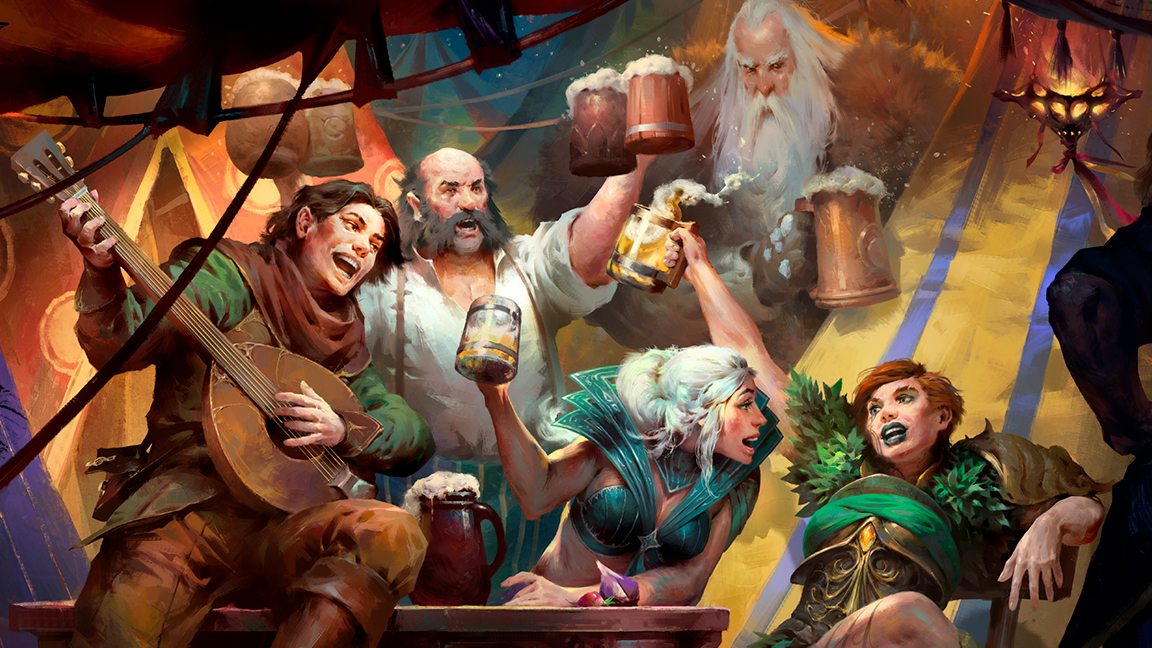
In today’s article, I’m excited to talk about a concept that’s a central part of any Flesh and Blood player’s tool kit, regardless of if you actively think about it or not. That is the increasing opportunity cost of deckbuilding and card evaluation. I’ll also delve into power creep(?), and the ability for decks to solely focus on sticking to their own gameplan, rather than choosing to diversify their counter cards and interact with their opponent.
With each new set release, these topics become increasingly important for aspiring deckbuilders and players who want to attempt to grasp and predict a potential meta before it arises.
Everfest has a massive opportunity to shake up the meta on a scale we’ve never seen before.
Everfest is a supplemental set, which means a sudden influx of new cards for every deck in the game. While Crucible of War’s launch was before I joined the game, I read about the impact it had on drastically altering and disrupting the standard norms established in Welcome to Rathe and Arcane Rising. With Everfest, we have more cards than ever before for each and every class across both Blitz and Classic Constructed. Unlike the days of WTR and ARC, players no longer have to break from the confines of their class just to finish a decklist. Generics are completely optional.
With non-rotational formats and an ever-expanding card pool, deckbuilding- and the complexity of Flesh and Blood as a whole- is only increasing.
Opportunity Cost
I touched on this concept in my Tales of Aria Theorycrafting article during ToA's preview season, but this concept is only growing in significance. Opportunity cost is the loss of potential gain from other alternatives when one alternative is chosen. On what this means to Flesh and Blood specifically, I'll quote myself:
“By choosing to include one card in your deck, you are foregoing the opportunity to include another. Cards will compete for certain slots in decks, and slots devoted to certain functionality will be retired to make room for new. This is especially true in Blitz, where your playable deck is static between matches.
In old decks, making room for new cards will require careful evaluation of everything in the deck, then personal justification as to why you think the new cards are better than whatever was previously in that slot. You can validate that personal justification with thorough playtesting.
In the end, you should be able to take your decklist and walk your friends through why each card is in the deck and what it is trying to accomplish. Start big and envision your strategy and goals; then get granular with your card choices.”
With Everfest, every new class just got access to three new majestics, one new rare, and three new commons. Many of these cards fill design spaces that were not as explored in the past. Some of these new cards will become cornerstones to strategies, while others compete with staples that were previously no-brainers. Take, for example, Disable (blue), which you’d find in nearly every Bravo. With Macho Grande and Thunder Quake in the mix now, Disable needs to re-justify its position- and I don’t expect it to win many of those challenges!

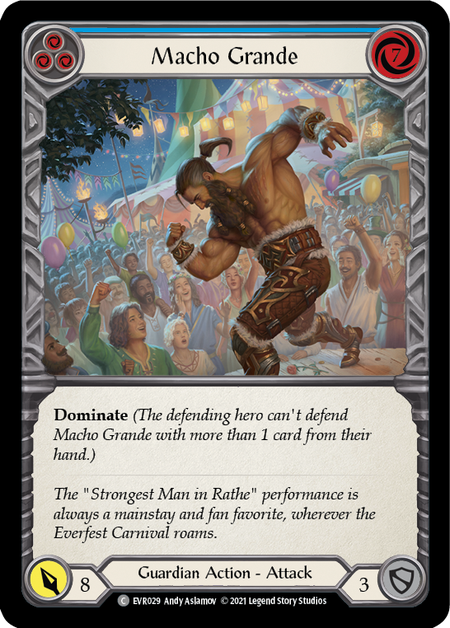

Ninja players face an EXTREME example of opportunity cost conflict with Hundred Winds. By Including this card in your deck, you are directly incentivized to jam as many copies of it as you can in your list (perhaps with some additional ways to draw more cards and create card advantage). Instead of just competing with one other card in its color strip, it’s now competing with six or nine total cards, depending on if you’re playing Blitz or Classic Constructed. Is including 6-9 copies of Hundred Winds better than any other alternative? Ninja players will have to make- and ultimately prove the validity of- that decision.
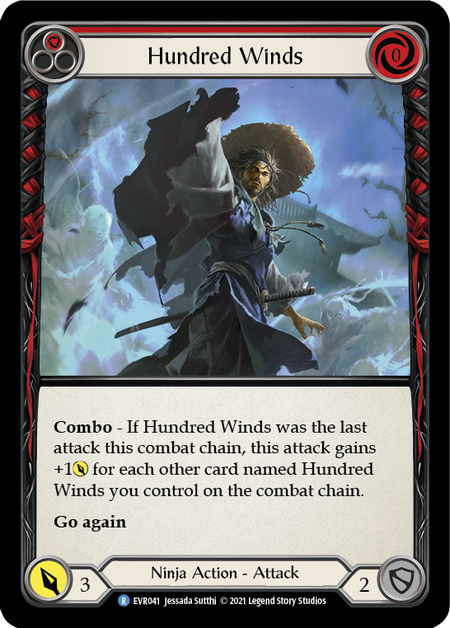
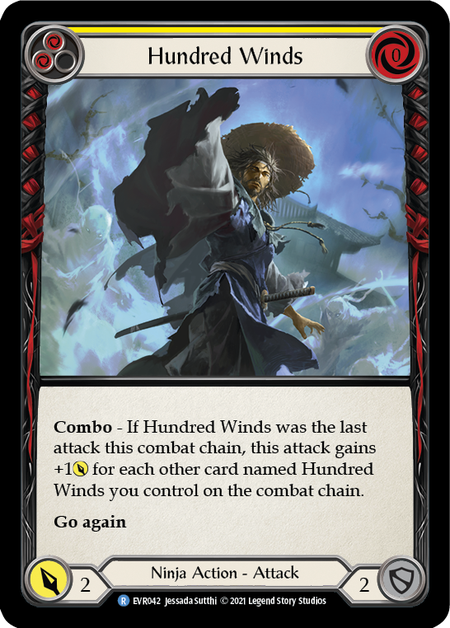
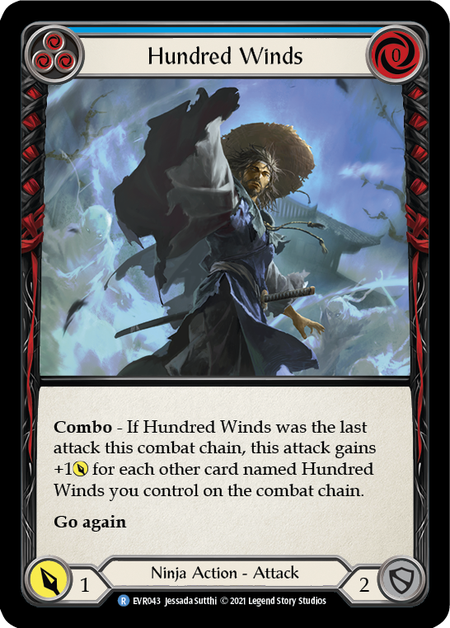
With so many new options for every class, there’s more opportunity cost decisions to be made than ever before, in both deck and equipment slots. Only the best cards should be chosen for a given slot and strategy; in general, that means the power level of proactive decks is just going up.
This brings us to the subject of power creep.
Power Creep, or a Lack Thereof
James White touched on the concept of a mathematical matrix model for every card in a recent interview with Matt Di Marco of Instant Speed. Many writers- from Abbas Dedanwala to Roger Bodee to Frank Hung and even myself- have explored the mathematical modeling behind the economy of Flesh and Blood combat. Every card type is balanced behind a corresponding governing formula that determines balance parity across pitch strip, attack/block value, and resource cost. It works like this:
Attacks
Pitch Value + Attack Value + Defense Value - Cost to Play = 8
Actions
Pitch Value + Attack Modifier + Defense Value - Cost to Play = 7
Reactions
Pitch Value + Attack Modifier + Defense Value - Cost to Play = 6
Where the perfectly-balanced math ends is when additional, non-numerical text is introduced into the equation. This subjective area introduces game design complexity and imbalances that can lead to cards being over- or under-powered. It’s this gray area of design space that has led to the bans and erratas we’ve seen in Flesh and Blood’s history. My favorite example to illustrate this concept to players is comparing these two cards:
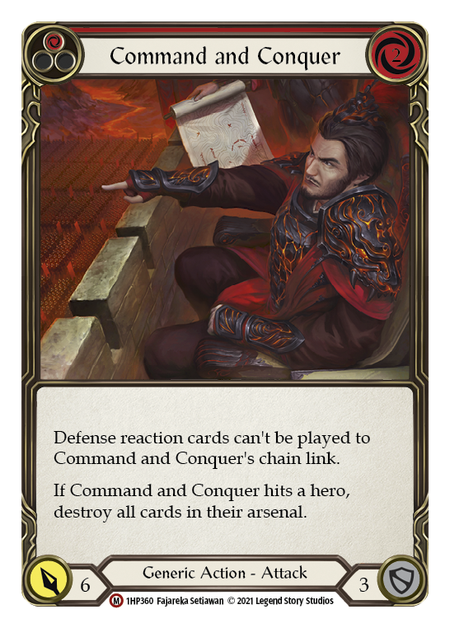
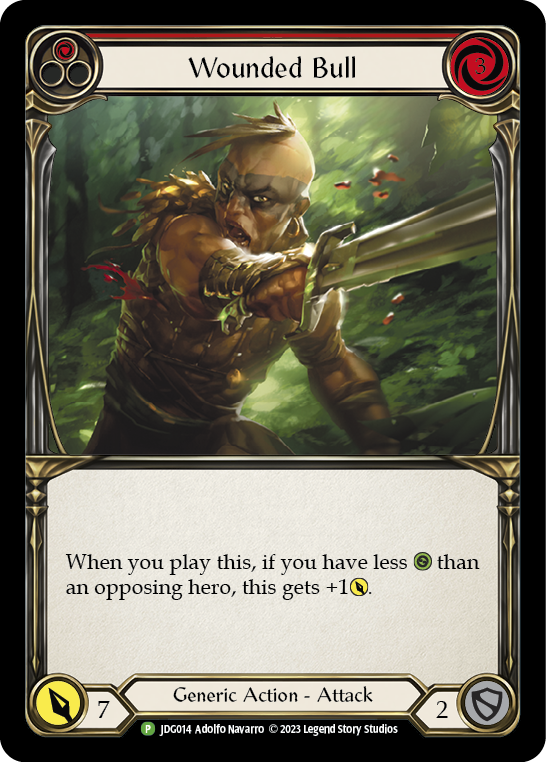
Take that formula, plug in both cards, and you get the same number: 8. But which card would you rather have in your deck?
These additional effects, mechanics, and game rules are also what makes Flesh and Blood fun to play. It wouldn’t be fun to just throw cards at each other containing only random numbers, no art, no thematic flavor, and no interesting game rules.
Ultimately, the design and governing matrixes help keep the game in check, and LSS does their best to balance the additional, non-numerical text of their cards. Given the staggering complexity of the game, they do a pretty good job. So in theory, the mathematical rules + LSS’s oversight (and intervention when necessary) should prevent power creep. But in non-rotational formats, power creep could come in the form of players always choosing the cards for their deck that push or even break the balancing rules set in place.
It will be interesting to watch how it develops over time. But in theory, with infinite more set releases, decks will be forced to play only the most powerful cards for their respective slots and strategies in a given field, potentially reducing the viability of the vast majority of the game’s card pool. This isn’t a problem that’s unique to Flesh & Blood. All other TCGs must work to eliminate or otherwise reduce power creep, for the overall health of the game and to keep it fun and fair for the playing field.
Strategic Silos
With so many new cards and options available to each and every class, we see the emergence of a growing divide within deckbuilding tenets and strategies.
Sometimes, pilots just want to force a strategy against any opponent without respect to what the opponent is trying to do. They either win with their dedicated plan, or they eat the loss and shuffle up at the next table intent to do it all over again. Other times, pilots want to interact with everything the opponent does with the hopes of defending it out and slowly grinding them down over time by always having the best response to every situation. Or, players can choose a balanced deck that falls somewhere in the middle, with slots dedicated to responding in matchups that require it while still applying pressure to control the game's tempo.
In new metas, when everything is brand new, the decks that tend to do the best are aggressive decks with a sound and proactive game plan. They may include some sideboard tech to deal with anticipated threats from the field, but for the most part have a laser-focused plan that they prefer to stick to. Why interact and defend heavily when you can just generate consistent, powerful pressure and keep your opponent on their back foot?
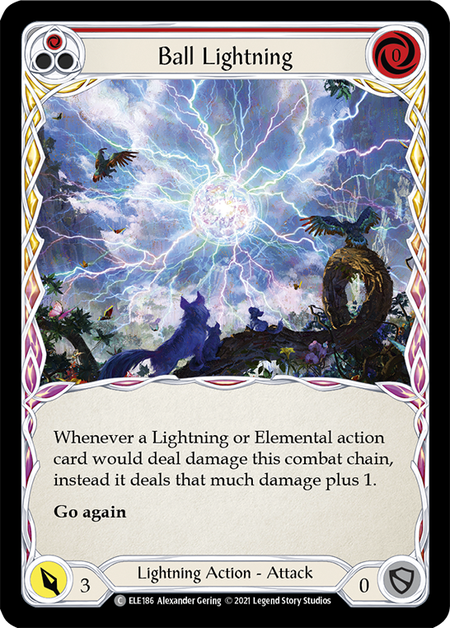
Largely, pre-ban Briar was a non-interactive deck, as siloed as they come with the sole intent of racing and just pushing as much damage as possible to gain value from an oppressive hero power. The now-banned Ball Lightning exemplified this singular focus- it doesn't even block!
In contrasting response, Guardian stepped up to the plate. Hyper-tailored and very interactive versions of Bravo and Oldhim emerged with the sole intent of diversifying their strategies to counter what Briar was doing and established alternative win conditions that could overcome Briar’s obsession with a linear, tunnel-vision plan of pure violence. This was a real-world example of two opposite sides of this deckbuilding tenant spectrum.
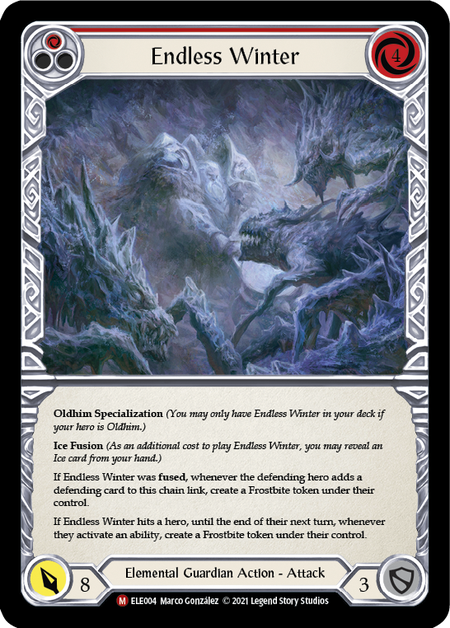
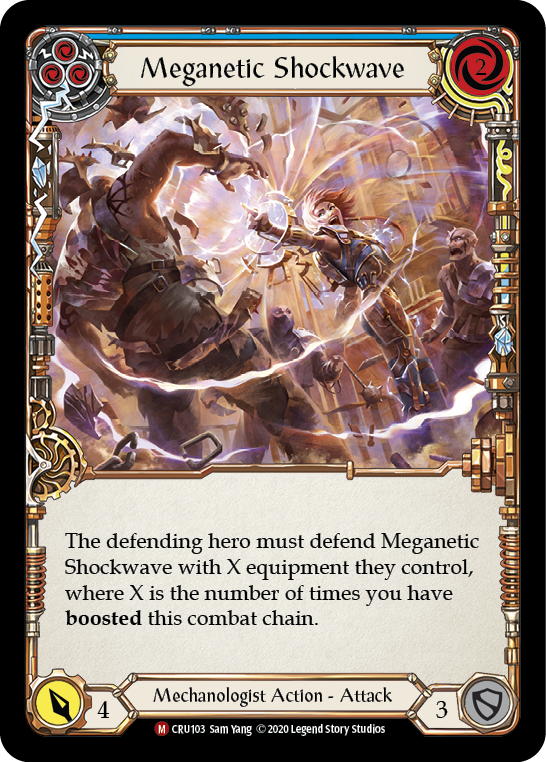
With a smaller card pool, players have less choices in deck building, and are only able to focus on their strategy to the degree that the game designers focused on it. Boost Mechanologists were forced to silo their strategies by the very nature of the mechanic- but the limitations of the Mechanologist card pool meant there were often inclusions that didn't tie closely to the central strategy.
As the meta continues to develop, players will need to choose if they prefer to keep the non-interactive, predictable but strong linear nature of their siloed decks or diversify and adapt with counters and alternative win conditions.
Conclusion
I hope this article provided some helpful insights into both the game design of LSS, and some of the issues & challenges that deckbuilders and players will likely face over time. I am incredibly excited for Everfest and the impact it will have on Flesh and Blood. I wish you nothing but the best luck and economic fortune for your card pulls!
I’d like to extend an extra-special thank you to all the new Patrons who have supported my Flesh and Blood Patreon launch this past week: Ryan C (my best friend), Jeremie M, Byron B, Jeremy M, Pawel U, Trenton M, Ryan C, Andrew W, Ignacio V, Jesse N, Nicholas S, Mark C (our awesome Rathe Times narrator!), Thomas L, Karol, Jayson K, Josh S, Addison H, and Thomas H!


